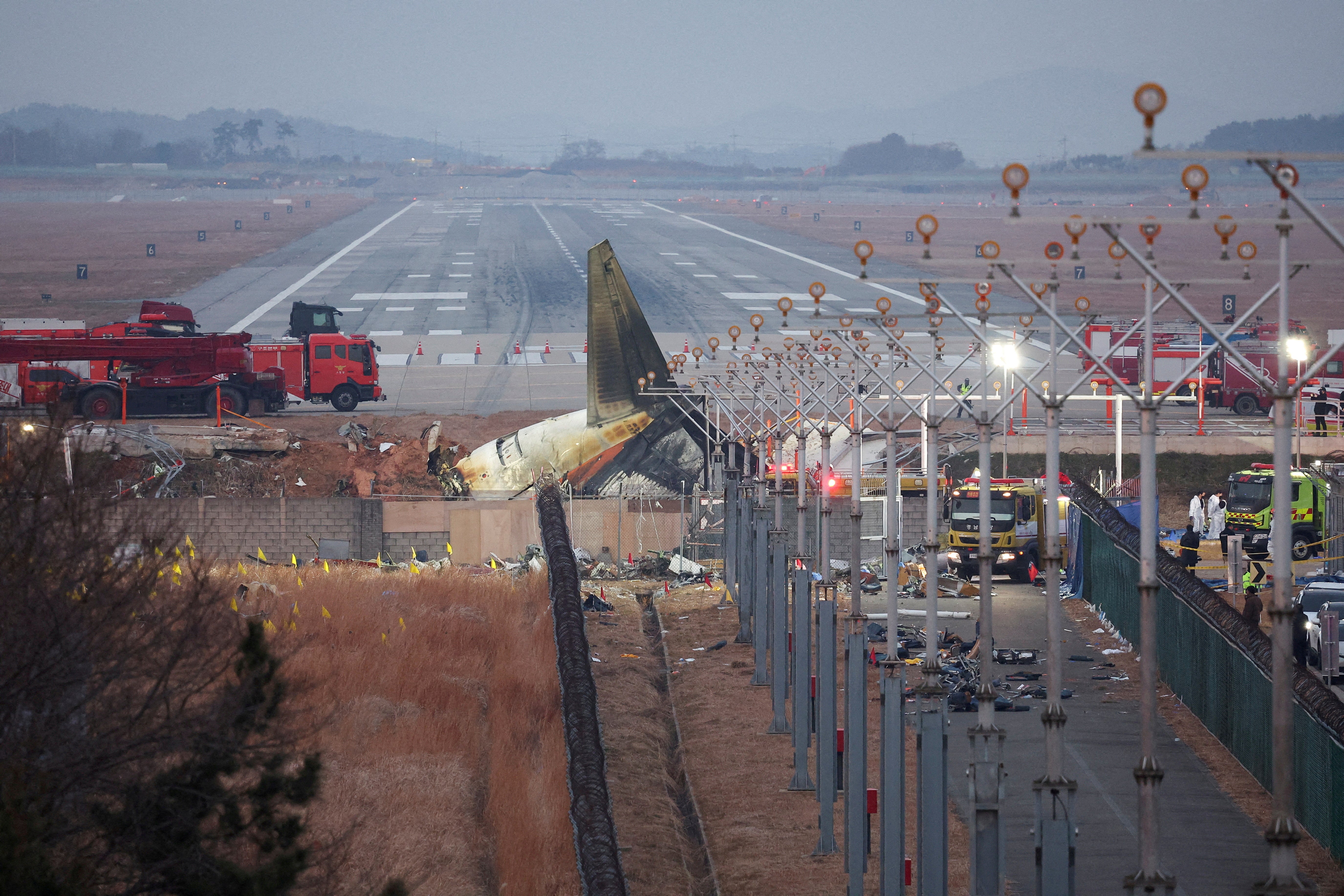Jeju Air crash investigation finds new evidence suggesting bird strikes caused disaster
Crash at Muan airport on 29 December killed 179 people
Your support helps us to tell the story
From reproductive rights to climate change to Big Tech, The Independent is on the ground when the story is developing. Whether it's investigating the financials of Elon Musk's pro-Trump PAC or producing our latest documentary, 'The A Word', which shines a light on the American women fighting for reproductive rights, we know how important it is to parse out the facts from the messaging.
At such a critical moment in US history, we need reporters on the ground. Your donation allows us to keep sending journalists to speak to both sides of the story.
The Independent is trusted by Americans across the entire political spectrum. And unlike many other quality news outlets, we choose not to lock Americans out of our reporting and analysis with paywalls. We believe quality journalism should be available to everyone, paid for by those who can afford it.
Your support makes all the difference.South Korea confirmed that bird strikes played a role in last month’s fatal crash of a Jeju Air plane, although the precise cause remained under investigation.
A preliminary investigation report released on Monday revealed that feathers and blood stains from birds were found in both engines of the Boeing 737-800 which crashed on 29 December, killing 179 of the 181 passengers and crew members onboard.
A DNA analysis identified the bird remains as those of Baikal Teals, a migratory duck species, the report said. It didn’t offer any conclusions about what might have caused the plane to land without its landing gear deployed or why the flight data recorders stopped working in the final four minutes.
The flight from Bangkok overshot the Muan international airport’s runway as it made an emergency belly landing and crashed into an embankment containing navigation equipment, called a localiser system.
“After the crash into the embankment, fire and a partial explosion occurred. Both engines were buried in the embankment’s soil mound, and the fore fuselage scattered up to 30-200 meters from the embankment,” the report noted.
The localiser system, installed to assist jets in approaching the runway, was housed in a reinforced concrete and earth structure at the Muan airport.
Aviation safety experts said after the accident that the design likely exacerbated the impact of the crash.
As part of the ongoing investigation, South Korean authorities were set to dismantle the engines for a detailed inspection, analyse in-flight data and air traffic control records, and examine the embankment, localisers, and evidence of bird strikes.
“These all-out investigation activities aim to determine the accurate cause of the accident,” the report said.

Investigators said air traffic controllers had warned the pilot about potential bird strikes barely two minutes before the aircraft sent a distress signal, which confirmed that a bird had struck the plane. Shortly after, the pilot attempted an emergency landing.
The black box from the flight ceased recording approximately four minutes before the crash, with investigators yet to determine why. Further analysis was underway to assess the plane’s failure to deploy its landing gear, which caused it to skid off the runway and ram into a concrete structure.
Footage showed the passenger jet slamming into the structure at high speed and exploding. Aviation experts said the structure should have been made with lighter materials that could break more easily upon impact.
In the wake of the accident, South Korean authorities announced they would replace the structure with a one that would break more easily upon impact.
It was also reported that the country would change similar structures at eight other airports.
Additional reporting by agencies.

Join our commenting forum
Join thought-provoking conversations, follow other Independent readers and see their replies
Comments